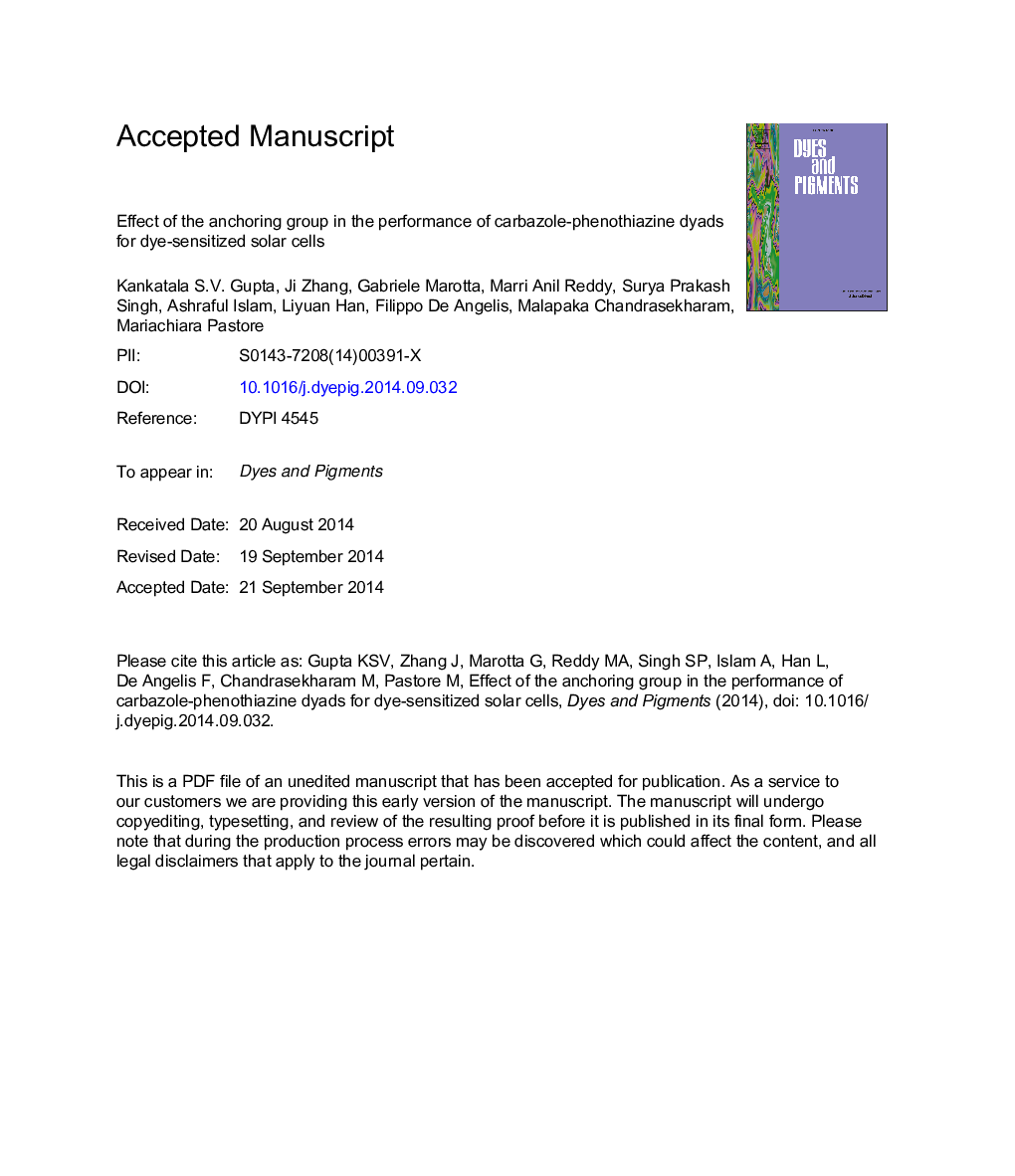| Article ID | Journal | Published Year | Pages | File Type |
|---|---|---|---|---|
| 6600358 | Dyes and Pigments | 2015 | 40 Pages |
Abstract
A combined experimental and theoretical study is carried out on two novel carbazole-phenothiazine dyadic dyes bearing the simple carboxylic acid and the more rarely investigated malonic acid as anchoring group. An improvement of the photovoltaic performances is observed when the malonic acid is employed in place of the carboxylic acid, even if the highest efficiencies for this family of organic dyes were recorded with the use of the cyanoacrylic and rhodanine-3-aceti acid as anchoring units. The low photocurrents measured in the case of the carboxylic anchoring are rationalized on the basis of the computational modelling of the isolated dye in solution as well as the investigation of the electronic structure of extended dye-sensitized TiO2 models. The theoretical calculations suggest that the low short current densities might arise from the unfavourable interplay of the dye's optical properties (blue shift of the absorption spectrum) and of the energy alignment between the dye's LUMO and the semiconductor conduction band edge, possibly causing an inefficient electron injection process.
Related Topics
Physical Sciences and Engineering
Chemical Engineering
Chemical Engineering (General)
Authors
Kankatala S.V. Gupta, Ji Zhang, Gabriele Marotta, Marri Anil Reddy, Surya Prakash Singh, Ashraful Islam, Liyuan Han, Filippo De Angelis, Malapaka Chandrasekharam, Mariachiara Pastore,
